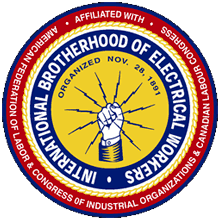October 3, 2011
By Marc Bussanich
The towering cranes that used to build warships at the Brooklyn Navy Yard have sat idle for a long time. But the yard has made a lot of economic headway since the city purchased it in 1967. Today the yard is home to a wide range of different businesses that do everything from furniture assembly to producing major motion pictures.
But the organizers and participants at last week’s “Building the Future: New York State Transit Manufacturing” conference, however, have grander visions for the yard and the economy. Sponsored by the Blue Green Alliance, a partnership between labor unions and environmental organizations to advance “green jobs,” the participants explained how transit manufacturing can go a long way in reducing the high unemployment rate as the economy continues to sag.
John Samuelsen, TWU Local 100’s President, participated on the “It’s About Jobs—Mass Transit and Economic Development” panel and spoke about how “unfair and outrageous” it is that the transit equipment that TWU 100 members operate and maintain are not manufactured in the U.S.
Samuelsen used to inspect track that was produced by Bethlehem Steel. But then the company got out of the track business, compelling the MTA to purchase steel from China. “It’s an incredibly disturbing reality that the union would have to inspect track made in China. We should be manufacturing rolling stock, buses and rails here in America,” said Samuelsen.
Although Samuelsen would like to see transit manufacturing occur in Brooklyn at the navy yard, upstate is home to the largest passenger rail facility in the U.S., according to Chuck Wochele of Alstom Transportation, which produces rail cars in Hornell, Elmira and Rochester employing 550 workers.
Wochele sat on the same panel with Samuelsen and said in response to Samuelsen’s call to manufacture in Brooklyn. “Moving our facilities from upstate to the navy yard would be no easy task as we would have to replant a sophisticated manufacturing process and train a whole new workforce.”
The MTA’s Capital Program was mentioned numerous times because it is the source of wide-ranging economic impacts for all of New York. According to the MTA, the 2005-2009 Capital Program generated almost $14 billion in business and maintained or created 325,000 jobs, resulting in almost $41 billion in overall economic impact. Indeed, Wochele said, “We wouldn’t be in New York at all if not for MTA’s Capital Program.”
The Capital Program seems to be a good example of the type of public/private partnerships needed to bring down high unemployment. But according to Congressman Jerrold Nadler of the 8th District, a long-time supporter for public transit investments, House Republicans seem bent on reducing funding for public transit while increasing funding for highway construction and expansion.
Nadler noted that preliminary information of John Mica’s, Chairman of the House Transportation and Infrastructure Committee, transportation bill reveals NY would see a $646 million cut in Fiscal Year 2012 from the FY 2011 budget of $1,747 million
Nadler didn’t mince words in his opening remarks to the conference’s attendees, “We are in a depression, not a recession. Our problem is not a deficit crisis but an unemployment crisis.” The only way out of the economic malaise, noted Nadler, is massive government spending. “Unlike the 1930s, we know how to solve it.”



